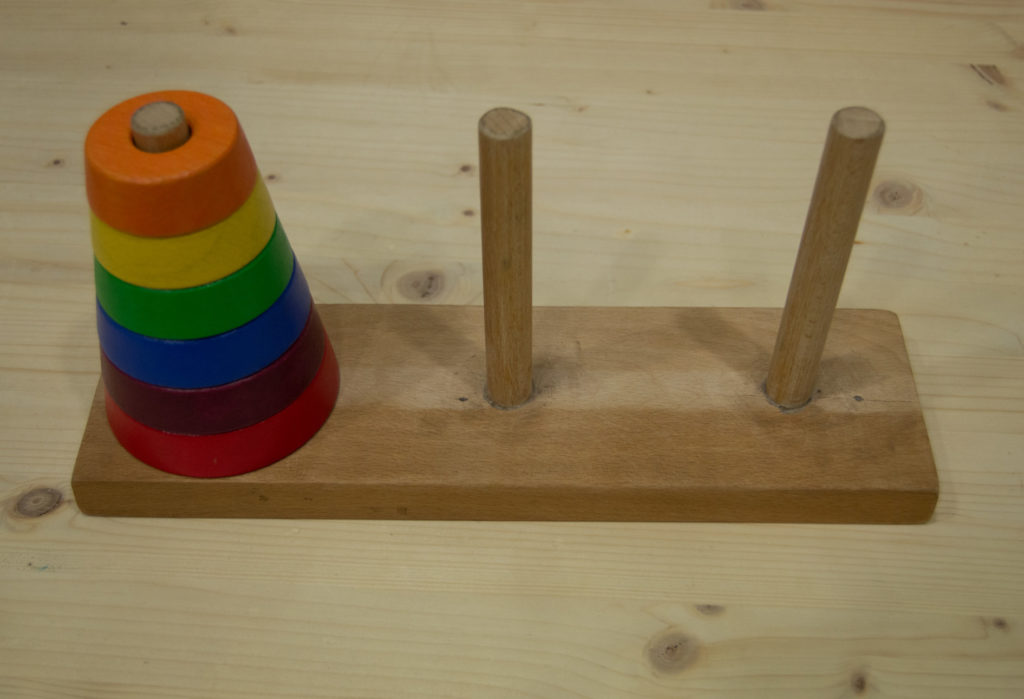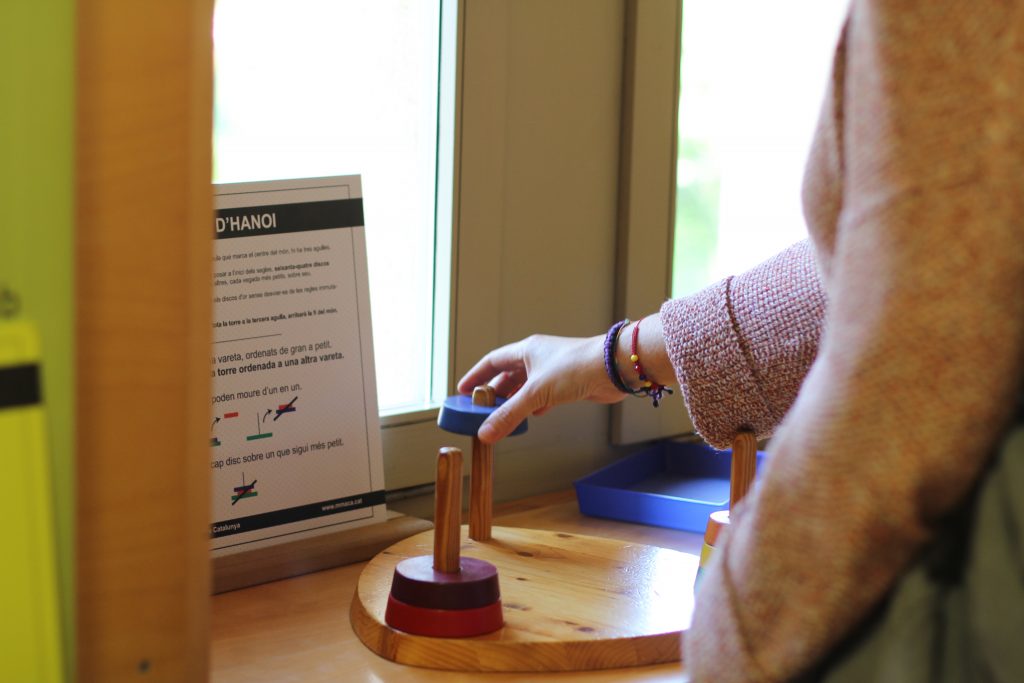Mou la torre a un altre pal.
Has de moure els discs un a un i deixant sempre els petits sobre els grans.
This well-known game consists of a base with three poles to insert the 5 discs. The pieces must be moved, from one to one and from one pole to another, until they are all at the last pole.
To begin with, the disks are placed on a pole, from largest to smallest. They can be moved one at a time and can never be left on another smaller disk.
- Hotel Area: Sala Martin Gardner
- Minimum age: from 6 years old.
- Required time: 5-10 minutes.
- Number of participants: One or more people
- Keywords: algorithm, puzzle, tree diagram.
- Taxonomy: RECREATIONS


Historical and mathematical context
In 1883 a puzzle signed by professor N.Claus (from Siam) began to be sold in France:
According to an Indian legend, in the Temple of Benarés, beneath the point that marks the center of the world, there is a brass plate with three diamond needles.
During the creation, God placed 64 pure gold discs of different sizes in one of the needles, forming a tower.
The monks have been changing places for generations, one by one, the disks of the tower between the three needles so that a larger disc will never be found on a smaller one.
When they finish moving all the discs to another needle they will have finished the work, and the tower and temple will collapse, causing a great thunder that will make the world disappear.
In fact, this whole story was an invention by the French mathematician Édouard Lucas (N. Claus de Siam is an anagram of Lucas of Amiens). Despite the simplicity of the challenge, it has given a lot of play throughout the history of recreational mathematics.
On the FCRI page you will find more information about this game, a parallelism through a graph, an algorithm to solve it.
